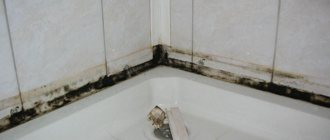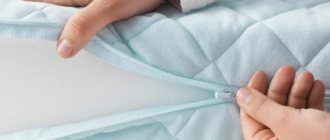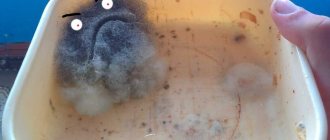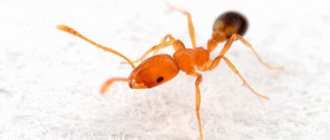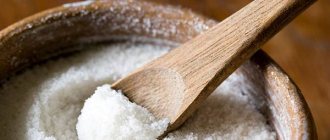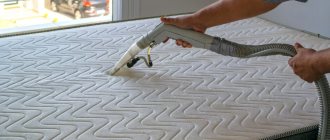Mold is one of the most insidious and harmful “neighbors” that can settle in a house. In addition to the fact that mold deposits negatively affect the appearance of your home, it can also destroy almost all materials from wood to brick. In addition, the waste products of the fungus are harmful to the health of household members.
To combat mold, stores offer a huge selection of chemicals.
What should those who have a long way to get to the store or don’t want to use chemicals do? In this case, you can use folk remedies.
Causes of fungus and harm to the body
Unlike fungi that are beneficial to humans, which are used to sour milk and create medicines, there are also harmful types. Mold can settle in industrial premises, in living rooms and bedrooms, in the kitchen, but most often it can be seen in the bathroom or other rooms with high humidity.
The immediate cause of the appearance of fungus lies in dampness. Risk factors:
- indoor humidity more than 60%,
- violation of the ventilation regime, rare ventilation of the room,
- the presence of walls with poor vapor permeability,
- errors during installation of the ventilation system,
- excessive coolness, lack of heating (for example, on the balcony),
- presence of leaking plumbing.
Often the fungus is found in end apartments, where it is colder than in housing with a different location. In some apartments, mold deposits are detected after the installation of plastic windows, since the microclimate in the room changes and air circulation is disrupted.
How to find fungus on walls or ceilings? You need to pay attention to black, green, yellow spots, less often they are gray-brown, pink. Some people think that such stains are just dirt, but you shouldn’t put up with it or remove it with regular water. Mold elements are responsible for the production of aflatoxins, which cause intoxication of the body and over time can provoke cancer.
Yellow mold is considered the most dangerous and poisonous, but other fungi also produce mycotoxins, which reduce immunity and performance and can cause the following diseases:
- rhinitis, otitis, sinusitis,
- allergies, urticaria, diathesis in children,
- bronchial asthma,
- headache,
- damage to the heart and internal organs,
- skin diseases,
- diarrhea, nausea,
- stomatitis,
- conjunctivitis.
The unpleasant sight that is a fungus can be seen almost everywhere where there is high humidity. Microorganisms can invade brick, concrete walls, ceilings or floors; they thrive on putty, plaster and especially wood.
It is the most difficult to remove mold from wood, since the growth rate of microorganisms is faster, and wooden surfaces retain moisture more strongly. Furniture and wooden wall coverings are the most “popular” substrates on which mold settles.
In second place at the risk of infection are loose gypsum walls and bases on which there is a thick layer of putty. Mold also appears on brick and concrete, but removal is easier.
Removing the smell of mold
To remove moldy odor in a room or from clothes, you can use store-bought products or resort to traditional methods. The former are available in the form of sprays or sorbent powders. They eliminate unpleasant odors for several weeks.
The second option is household products. These include:
- Vinegar in combination with brown sodium salt of boric acid. In this way it is easy to remove the smell from damp textiles. First, the clothes are washed with the addition of a cup of table vinegar, then the procedure is repeated with the same amount of borax.
- Essential oils do an excellent job of eliminating unpleasant odors and filling the room with a pleasant aroma. For a pronounced effect, it is recommended to purchase a special diffuser - an ultrasonic device for spraying aromatic oils. To eliminate odor in an area of 15 square meters. m., 4 drops of the substance are enough.
- The sun is the main enemy of mold. Drying things in the air under the warm rays of the sun will help eliminate moldy odors from books, clothes, pillows, and outerwear. Ultraviolet light is also useful for preventing future mold growth.
- Table vinegar diluted with water is often used to eliminate odors. The solution is placed in a spray bottle and sprayed around the room. Using vinegar is one of the most inexpensive ways to combat mold odor. It is less pleasant than aromatic oils, but is very cheap.
The main thing in the fight against unpleasant odors is to find the cause of the fungus and eliminate it.
Rules and conditions for fungus removal
To effectively combat the problem and remove the fungus forever, you need to influence its causes. It is not enough to treat the walls once - a major overhaul will help here. Finishing materials must be removed from the walls, otherwise the fungus will spread further.
Furniture, interior items, belongings, equipment, clothes are removed from the room being repaired, and if possible, everything is disinfected. Textiles and items are washed at a temperature not lower than +60 degrees with powder. Furniture is wiped with antiseptics.
How to use essential oil
The easiest way is to put a few drops on a handkerchief or add them to a bottle of warm water. It is important to inhale this aroma to lift your spirits, relax and gain new emotions. And if you want to feel wonderful natural notes in your home, then add a little oil to warm water and pour into a spray bottle. This will not only refresh and humidify the air, but also clean it. This mixture can be used on any surface in the house.
Make steam inhalation by adding a few drops to a bowl and diluting with hot water. Cover your head with a towel and inhale the steam for a few minutes. Inhalation helps fight colds and relieves swelling in chronic rhinitis or sinusitis. Another good way is to add oil to a diffuser or special lamp. A good example is using lavender oil in your bedroom to promote sound and restful sleep.
Folk remedies for mold
The easiest way to treat walls is to use non-traditional means that are cheap and accessible. It is not recommended to remove large accumulations of fungus using these methods, since they are weaker (with the exception of copper sulfate). After the initial treatment, repeat treatments are done 7–10 days later.
Soda
Mold removal can be done using regular baking soda. This is a universal disinfectant that will not harm humans or pets.
Soda in the amount of a tablespoon should be diluted in a glass of water, then begin to treat the affected areas. The solution is poured into a sprayer, the walls and ceiling are irrigated. After an hour, you need to wash off the soda with water and wipe the base dry with a cloth.
Hydrogen peroxide
The product can be applied to walls in its pure form, without dilution. Peroxide does not produce harmful fumes, and the liquid is not toxic. You just need to be careful with wallpaper, because the solution has bleaching properties and can leave white spots on the surface after drying.
Peroxide can be used together with other components in the following recipe:
- take 4 parts water,
- add 2 parts vinegar, the same amount of boric acid,
- add 3 parts peroxide (3%),
- Apply to the fungus, leave for an hour, rinse.
Vinegar
Using vinegar helps against mold. Table vinegar is poured into a sprayer and the walls or ceiling are irrigated. Then rub with a cloth and leave for 2 hours. Then carefully wash off the vinegar from the surface.
Copper sulfate
Sold in packages in the form of dry powder. About 100 g of vitriol should be poured into a metal bucket, add 10 liters of warm water. Stir the mixture until the powder is completely dissolved. Pour the drug into a spray bottle and treat the affected areas of the apartment. You can use a foam sponge.
The solution should dry for 3 - 5 hours, then it is sprayed again on the same places, and so on up to 2 - 5 times. In advanced cases, you must first remove the putty and finishing material. It is not advisable to stay in the room for 3 days, then the fumes of copper sulfate will stop being released.
Laundry soap
Soap solution is a good antiseptic. Laundry soap is dissolved in water, then the walls are washed in a convenient way. After a couple of hours, wash off the remaining soap with water.
Ammonia
Ammonia can only be used on smooth, hard surfaces, and the product will be useless on porous substrates. Ammonia is mixed with water equally and sprayed onto fungus-damaged areas. Wash off with water after an hour.
Borax
Borax is a non-toxic product of natural origin that has powerful fungicidal properties. Destroys mold and prevents its reappearance.
Before using borax, you need to clean the surface with a vacuum cleaner so that fungal particles do not fly through the air. Then you should prepare the solution, observing the correct proportions.
Take a glass of borax from the bag and dilute it in 2.5 liters of water. The solution is applied to the base with a stiff brush, while simultaneously removing the fungus. The borax should be allowed to dry completely; there is no need to wash it off.
Bleach
Many bleaches contain sodium hypochlorite or other forms of chlorine (eg, Bleach). This additive is very effective against mold and can even replace professional fungicidal preparations.
Bleach is used only on surfaces that are white, otherwise it will not be possible to avoid unsightly stains and damage to the coating. Bleach can be used on tiles and glass, but it is not used on drywall and wood.
Due to its toxicity, working with chlorine must be done with caution. Protect your hands with gloves, and put a respirator on your face. Dilute the drug 1:10 with water and apply to damaged areas using foam rubber or a brush. After complete drying, the surface is cleaned and washed with water.
Other folk recipes
Tea tree oil is a natural antiseptic. Pour a teaspoon of oil into a glass of water and spray the walls and ceiling where the mold has settled. There is no need to rinse off the solution - the product is absolutely harmless to humans.
You can also treat surfaces against fungus using a solution of potassium permanganate. Pour ½ teaspoon of potassium permanganate powder into a liter of water, spray the walls or gently wipe them.
Some people use office glue for mold. It is diluted 1:1 with water, after which small areas with mold can be treated with the product.
Hydrogen peroxide
This remedy is in any home medicine cabinet. Hydrogen peroxide destroys bacteria and fungi. It can be used to clean various surfaces from mold.
Use a 3% hydrogen peroxide solution. First clean the surface with a damp cloth. Apply peroxide to moldy areas. Leave the product on for 10 minutes. Then wipe the surface with a sponge or brush. Mold and stains will come off easily. After this, wipe the wall or floor dry.
After a week, the treatment should be repeated for preventive purposes.
Special remedies for fungus
Most manufacturers of building mixtures and paints and varnishes produce various anti-fungal products. It is important to describe the problem to a specialist so that the employee can help you choose a remedy suitable for a specific type of mold. Solutions must match the material to which they will be applied and not spoil it.
The most popular solutions:
- Atlas Mykos - sold in the form of a concentrate, can be used for interior and exterior use, including on mineral surfaces.
- Spectrum - used on wood, putty, painted surfaces, and at high humidity.
- Teflex is an environmentally friendly product that can be applied to walls in a child’s room.
On the walls you can use Antisept, Abedis, Xiolat, Snezhka Impregnation.
Antiseptics in solutions
Typically, solutions are used when the area affected by the fungus is quite large. The drugs are sold in large containers - jars, canisters, and have a ready-to-use form. The concentration of the solutions is safe for humans.
They are applied with a sponge, erasing most of the mold. Usually 1-2 treatments are enough to get rid of the fungus, but then for prevention you can add the product to the water for cleaning the room.
List of the best solutions with fungicidal additives:
- Dali,
- Fongifluid Alpa,
- Olympus Stop mold,
- Biotol,
- Mavix-Bio.
Primers - antifungal
Primers can be used to carry out treatment even at the stage of construction or repair. Good products are sold in any specialized stores; almost every brand of building materials has them. Excellent quality is observed in the soils Milkill (MilKill), Terragrunt, Kremen, Lakra, Auburn.
Most products have the ability to penetrate deeply into the pores of the base. Anti-mold components are introduced into the smallest crevices of concrete, and other substances fill the pores from the outside. To avoid problems with mold for a long time, it is better to treat any surfaces during repairs with similar soils.
What dangers does mold pose?
Some people are sensitive to mold and may experience symptoms such as nasal congestion, eye irritation, allergic reaction (itching, rash, redness), difficulty breathing. But people who are allergic to mold may have a serious reaction, including shortness of breath or fever. When kept in a poorly ventilated area, especially for a long period, mold can cause infectious diseases in the lungs, since spores during breathing enter primarily this organ. This is especially important for those who are suffering from (or have already had) respiratory infections.
The money tree pleases with lush flowering: my secret is in caring for the leaves
Rare shot: Viktoria Isakova showed her grown-up daughter from Yuri Moroz (new photo)
A student at the Vietnam Police Academy shared how she takes care of her facial skin.
Research has shown that exposure to mold can have detrimental effects on one's lifestyle. Thus, people suffering from asthma will experience a deterioration in their general condition, as well as an increase in coughing attacks and shortness of breath. During the work, scientists found that children are much more susceptible to respiratory diseases when they are in an infected room. In the future, chronic viral diseases can cause both bronchitis and asthma, because the respiratory system suffers first.
Safety precautions when working
When processing the premises, it is worth using personal protective equipment - rubber gloves, cotton-gauze bandages or pharmaceutical masks, respirators. It is better to wear glasses on your eyes when using caustic solutions. It is recommended to carry out all work wearing thick protective clothing.
After finishing the treatment of the walls, you need to thoroughly ventilate the room, wash the clothes, and throw away the rags and sponges, packing them in a bag. If allergies, nausea, or vomiting occur, you should consult a doctor - this may be a sign of intoxication.
Reviews
Users note that all the drugs coped well with the problem of fungus in the bathroom. Here's what they say about Haiter spray foam for mold removal:
- No matter what means I used to remove black mold in the bathroom between the tiles at the seams: soda, citric acid, and even ordinary bleach - nothing helped. In a Japanese cosmetics store I came across the Haiter spray foam (380 rubles). It’s very convenient to use. After just 10 minutes, the mold began to disappear right before our eyes. One drawback is that you can’t actually find spray foams on sale. Marina
- I always bought Savo, and then switched to Astonish. The price is lower, but the effect is the same. Those who have chosen the drug Savo, be sure to buy the Polish one. Only he helps. Kate.
Please note that most mold and mildew products contain chlorine, so be sure to take precautions when using these products.
The process of removing mold from damaged areas
At the first stage, it is important to identify why the fungus has settled in the room. This will help address risk factors and prevent problems from occurring in the future.
It is necessary to thoroughly inspect the affected area of the wall for the presence of voids between the plaster and the base. By tapping the wall with a hammer, you can quickly identify places where the plaster has separated by the dull sound. Such areas must be repaired by removing the entire area, otherwise the mold will take up residence in its original location.
Fungus Removal Tools
To get rid of the problem, you need to prepare in advance rags, a basin and bucket, a brush, a roller, a sprayer, personal protective equipment and a solution with a fungicidal effect.
A metal spatula will be needed to remove the affected plaster. You need water to moisten the affected area so that fungal spores do not spread indoors by air.
Working in the bathroom
The most vulnerable areas in the bathroom are the joints between the plumbing fixtures and the walls, which are usually treated with sealant. Mold most often settles in the seams between slabs, in the area of socket boxes. If there is an indelible black coating there, it is most likely a fungus.
Work order:
- Remove moldy sealant or other material on which fungus has settled.
- Treat the area with the selected product.
- After drying, reapply sealant or other polymer.
- If fungus affects the seams between the tiles, scrape it off with a metal spatula or scraper.
- Apply grout with added fungicides.
It happens that mold settles in the bathroom ceiling. Then you will have to moisten the area with water, leave it for an hour, then scrape off the plaster with fungus. Next, you need to putty and prime the area with a special product with anti-mold additives. As it dries, apply another layer of soil that has the ability to penetrate deeply. Then the ceiling can be sanded and painted.
Removing fungus on walls and wallpaper
If fungus is noticed on the wall in the apartment, it must be removed without delay - within six months the mold will “grow” to the concrete base. The damaged finish must be removed by first sprinkling with water, and all deposits must be thoroughly cleaned. After drying the wall, it is treated with a fungicidal agent.
Drywall and wood should be treated with the strongest means, because the fungus spreads very quickly and penetrates deeply.
Mold spreads across the wallpaper at lightning speed, so you will have to remove the entire strip or even several. After removing the wallpaper, you need to check whether the affected layer covers plaster, concrete or brick. It may be necessary to carry out a major renovation by completely removing the trim.
Working against fungus on wood
There are special impregnations for wood, which contain antiseptic and fungicidal additives. Anti-fungal agents are applied to a dry surface from which areas of mold have already been manually removed.
Impregnation should be applied at least 3 times, and each layer should be allowed to dry. To complete the work, apply a layer of primer suitable for wooden surfaces.
Sanitation and ionization
Directing a stream of air enriched with ions and microelements into the problem area using a special device will help get rid of mold on the ceiling in the bathroom. The process is carried out only by trained specialists. The discouraging factor for such events is the high cost.
Prevention measures
The best prevention of fungus is to maintain cleanliness and prevent dampness. Ventilation valves must be installed on double-glazed windows, and ventilation must be installed in bathrooms and kitchens. It is important to insulate freezing walls, and in a private house to build a strong foundation and blind area. You need to check the plumbing: there are no leaks or breakdowns, otherwise fungus will inevitably settle in the bathroom.
If the air is too humid, uniform heating and installing an air conditioner to dry the air help. Reduces the risk of mold by drying clothes on the balcony rather than in the apartment, regularly using a kitchen hood, and frequently washing areas where mold may appear with antiseptic agents.
How is it harmful?
Not all types of branching mycelium are hazardous to health. The only dangerous fungi are those that produce volatile organic compounds (VOCs). Black mold is one of them. The VOCs it produces lead to the release of histamine in human immune cells, which can lead to lung diseases such as asthma.
This problem can become a real nightmare. Its exposure can lead to immediate or delayed reactions, so the true cause of a particular disease is not always immediately obvious.
Black mold in the bathroom provokes the following symptoms:
- dizziness;
- respiratory problems;
- flu symptoms;
- body pain and aches;
- skin rash;
- sinusitis;
- fungal infections;
- pulmonary ailments;
- depression;
- irritability;
- cough, etc.
If family members often get sick for no apparent reason, it is worth inspecting the bathroom and other rooms for microscopic spores.
Why does mold appear?
Mold begins to multiply when it gets into the right environment.
- Humidity. The ideal level is 60–80%. There may be so much moisture in the bathroom or shower room if your neighbors recently flooded you or if condensation appears on the windows after a change in weather.
- Temperature. Mold survives both very low and high temperatures. The most favorable range is from 4 to 20 °C.
- Ventilation. Closed windows, a pile of furniture, heaps of scattered things - and now it’s difficult for air to circulate around the room, it becomes more and more saturated with mold spores, and it becomes easier for fungus to multiply.
Types of mold fungi and the danger from their activity in the home
There are several main forms of the fungus, which easily grows in human habitation, spreads quickly and can cause the development of certain diseases. The following types of mold are distinguished:
- White, which mostly appears in the soil of potted flowers. It is minimally toxic, but can provoke the development of allergies in humans and animals.
- Green, which can usually be seen on spoiled food products (vegetables, fruits, bread, sausages, etc.). It is dangerous to humans, but almost never appears on walls, floors, ceilings, or furniture.
- Black, which is considered the most popular. It is universal and often appears in hard-to-reach places. The fungus easily provokes headaches, insomnia, contributes to the development of bronchial asthma, severe allergies with symptoms that affect the respiratory system. It is black mold that most often appears on concrete, plasterboard, wood and walls made of other materials.
Separately, it is worth highlighting the mold of rotting and blue stains. Such a coating destroys surfaces, greatly spoils the interior, that is, it does not look aesthetically pleasing. It spreads like lightning throughout the apartment and house. After appearing in one place, it can quickly grow, forming more and more new foci.
Migraines, irritability, skin rashes, cough, red eyes, itching, insomnia - all this can be a consequence of staying in a room where there is mold on the walls.
Professional means for fighting
It is sold as a ready-made paste or requires dilution with water in the proportions specified in the instructions. The composition is applied to the cleaned walls with a brush or spatula, preferably in several layers.
Special liquid solutions, pastes or sprays intended for various surfaces (concrete, brick, wood, ceramics, woven materials) also have antiseptic properties.
Popular names of antifungal drugs:
- Ceresit CT 99;
- Tikkurila Homeenpoisto;
- DALI “Universal antiseptic”;
- Alpa Fongifluid;
- Pufas Comet;
- Domestos "Universal Spray".
Proportions, exposure time, spray distance and other parameters of each product are indicated in the instructions.
Methods for eliminating unpleasant odors
To eliminate the unpleasant odor emanating from black mold, you will first need to identify the source of its spread. If floor tiles, parquet or plasterboard areas on the walls are damaged, it is recommended to replace them with new material.
If the eaten surface cannot be replaced, you can use a mixture containing the following ingredients:
Mold repellents: soda, sodium, vinegar, citric acid.
- boric acid;
- hydrogen peroxide;
- white vinegar;
- running water.
All ingredients are mixed in the following proportions: for 1 part boric acid there is twice the amount of peroxide and vinegar, as well as four times the amount of water.
This mixture eliminates both the original source and its consequences. Before applying it, it is necessary to clean the surface of the walls. After treating the affected areas, you need to ventilate the room well and let it dry.
The smell of black mold can be eliminated with regular baking soda. It needs to be sprinkled on the eaten areas of the walls and left for a certain time. As soon as the smell disappears, thoroughly clean the treated coating with a vacuum cleaner.
How to “cut off the oxygen” to mold
The right solution to the problem is to get rid of moisture, which fungi love:
- Straighten shower curtains properly and hang towels to dry.
- Keep the bathroom, kitchen and other wet rooms clean and dry. Ventilate the premises.
- If the riser or drain is covered with “mushrooms,” it means there is a pipe leaking somewhere. Leaking communications need to be dealt with immediately.
Mold is dangerous only when the situation is advanced and the path to combat is long and difficult. Armed with our tips, you will deal with the fungus in no time.
Preventing the appearance of mold
To ensure that mold never returns after destruction, you need to follow simple rules:
- organize a normal heating system and maintain optimal air temperature;
- eliminate high humidity, adjust ventilation;
- use a kitchen hood when preparing food;
- do not forget about systematic ventilation of residential and non-residential premises;
- keep less geraniums and violets in the house, because these plants contribute to the proliferation of mold fungi in flowerpots.
Keep your house clean. At the slightest hint of a problem, take action immediately.
